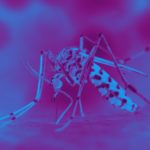Link to Pubmed [PMID] – 29212718
Proc. Biol. Sci. 2017 Dec;284(1868)
Multiple subtypes of avian influenza (AI) and novel reassortants are frequently isolated from live bird markets (LBMs). However, our understanding of the drivers of persistence of multiple AI subtypes is limited. We propose a stochastic model of AI transmission within an LBM that incorporates market size, turnover rate and the balance of direct versus environmental transmissibility. We investigate the relationship between these factors and the critical community size (CCS) for the persistence of single and multiple AI strains within an LBM. We fit different models of seeding from farms to two-strain surveillance data collected from Shantou, China. For a single strain and plausible estimates for continuous turnover rates and transmissibility, the CCS was approximately 11 800 birds, only a 4.2% increase in this estimate was needed to ensure persistence of the co-infecting strains (two strains in a single host). Precise values of CCS estimates were sensitive to changes in market turnover rate and duration of the latent period. Assuming a gradual daily sell rate of birds the estimated CCS was higher than when an instantaneous selling rate was assumed. We were able to reproduce prevalence dynamics similar to observations from a single market in China with infection seeded every 5-15 days, and a maximum non-seeding duration of 80 days. Our findings suggest that persistence of co-infections is more likely to be owing to sequential infection of single strains rather than ongoing transmission of both strains concurrently. In any given system for a fixed set of ecological and epidemiological conditions, there is an LBM size below which the risk of sustained co-circulation is low and which may suggest a clear policy opportunity to reduce the frequency of influenza co-infection in poultry.

